How to Gather Your Clan with Textiles – Valentino Luis (Innocentia Handwoven)
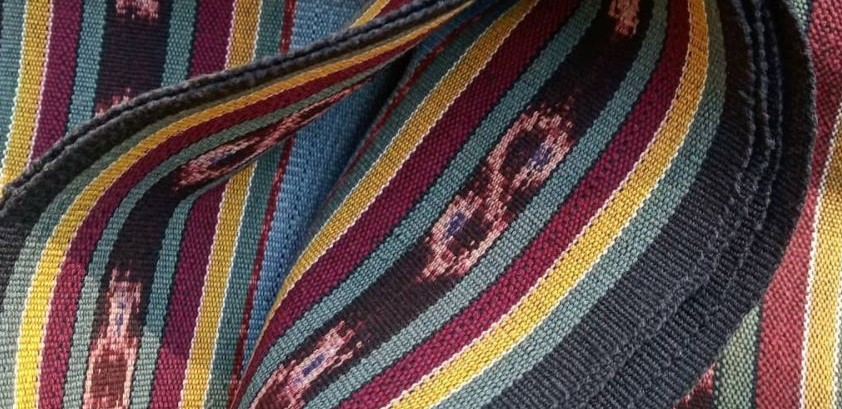
Bright naturally coloured woven cloths waiting to be transformed.
Valentino Luis, is the owner of Innocentia Handwoven. He was a travel journalist trying to see the world. Little did know, he found his self, identity and what is ‘home’ when he was away. Despite knowing about ikat handwoven since he was a child, he started to fell in love with handwoven and learn about Flores history and culture, when he was out and about exploring the world. Valentino then started Innocentia Handwoven to tell those stories.
In this episode of aNERDspective (our NERD talk show where we converse with amazing friends about their textile adventure and perspectives), we talked to Valentino about his journey in starting up Innocentia Handwoven, its beautiful name and even the unexpected reunion through those woven textiles.
Note: This transcript has been edited for reading format.
Tony Sugiarta: Welcome Valentino to today’s episode of aNERDspective. As I have mentioned earlier before we pressed the record button that I have been following your work as a travel writer and photographer for in-flight magazines. And I recently found out that you have a brand called Innocentia Handwoven that promotes products with Flores woven textiles. I would like to find out more about your journey, your stories, and your perspectives in working with them. Maybe first of all, give us a little introduction about yourself, your background, and your journey with woven textiles.
Valentino Luis: Thank you so much and it is nice to be part of this. Thank you for inviting me. My name is Valentino Luis. I am actually a travel journalist. I was born and raised in Flores.
What is your experience with woven textiles?
I knew and got connected with woven textiles since I was a child. My mother comes from a weaver’s family, so she and her siblings can do ikat handwoven. I have seen it since I was a child, but I was not fascinated by or involved in it because I have other interests – travelling, writing, and also photography. I spent most of my time doing that and became a nomad, moving from place to place. I could say that I just fell in love with woven textiles recently, less than five or six years ago. Then I got seriously into handwoven cloth in the last three years.
What is that moment, that now you are starting your own brand, what triggers you to do that?
It is a long journey. In 2014, I was in Bali and I felt something in my life. Then I have to leave Bali as my homebase and go back to Flores. I started a social voluntary project for our area in Flores. Then due to the connection with locals and people in Flores, slowly it became a contemplation about knowing who I am as a Floresian, my roots and my culture. I realised that I dream too much about foreign lands and culture and I did not care, I underestimated my own culture.
So, I started to learn Flores history and culture. My interest in handwoven cloth rose in that period, but very slowly. I never think that I want to jump seriously into this. In 2017, someone from Java gave me a gift which is a bag made from handwoven textile, but not a Flores handwoven, it is from Sumba. She said that this bag would be great to carry wherever I go as a travel journalist and to present myself as a person from East Nusa Tenggara. Every time I go and whenever I use that bag, people come to me and ask if that is true handwoven? Is it not printed? Is it really handwoven? Is it real from where you are from? How to get this? There are so many questions.
Also, the questions related to technique, the pattern, the process came to me and my knowledge about handwoven is very little. Every time I go to my house, I bombarded my mother with a lot of questions. I observed what she does, her work. I learn day by day and I do not want to go out. I am just so interested and want to know every detail of her works and, one day, my mom said that it would be better and it would be precious if I carry a bag made from her handwoven textile.
Actually our family and our clan, we have our own patterns and that is truly my identity. I can explain more and I can tell more stories if I wear my own clan patterns. It was my a-ha moment I could say. It is not just handwoven and it is not a piece of textile, but it has a lot of stories and it is easier for me to wear something from my own culture and my own clan. That is a great moment and I am really proud and embrace it. I think it is really important to embrace.
Could you share with us some of those patterns or stories of your family’s textile patterns?
Actually we have a lot of ikat patterns. I have three or four that I recognize and I did observe. I came from Sikka Regency in eastern part of Flores. In the previous era, most families or clans in Sikka have their own pattern because the ikat pattern is also an identity. So, wherever people wear it and whenever they go out of their village, we can recognize where they come from by looking at the patterns that they use. It is still practiced today, wherever we go, especially for women, if they wear their certain kind of patterns, then we know that this woman is from this family or this clan.
We have three or four patterns and I still have so much work to do with these patterns because I only expose two patterns from my clan, but few patterns left that still need a moment. I realize that some patterns are not easy to share. They treat the pattern as a precious item, as an identity and they do not want to spread it easily to everyone. Not all weavers could have this kind of pattern. So, I asked for more patterns from my family, but my mom said it is not for sale, it is just for us. It is for you (ed.: Valentino) to wear but not for sale or to give to somebody else. It belongs to us. Then I said to my mom that if we only keep it then people will not know.
That is interesting and how do you balance that, because you said that you tell the stories for two of them and some of them are reserved for the family.
One of the patterns is, whenever I tell the story I get goosebumps, is a pattern of my mom’s clan and only my mom and two people of my clan still have it. So, it is almost lost. When I show it to the public and share it, I tell a story about the pattern that it belongs to our family and our clan that are already split out through Indonesia, one by one they contact us and they tell me that they are also my family members. This is the strength of the pattern that could bind us and it can also gather us together as a big family.
It is interesting that you use the textile and manage to gather your family.
Yes, because we already split up through this country and then my mom was very surprised when I told her that I received a message from someone and I asked her whether she knew her or not. Then she (ed.: the message sender) told me her father’s name and my mother confirmed that it is her uncle and asked their whereabouts, e.g. in Singapore, Australia, etc. So we contact each other and I know my family better now.
That is nice. Are there certain restrictions in terms of who can wear what or only certain people would be able to do the weaving or so on?
Actually no, but something special here is that women who are weavers can do all the process because this process also symbolises that they are multi-tasking women, they can fix anything by themselves. But it is a long process and one process can take days or months. It also becomes a dilemma for us if we want to sell it because we cannot only ask someone to do it from the first to final process by herself because it takes a long time. So, we have to divide the task, each person only does one or two processes then there are others who do the rest.
I do have to make a ‘choice’ that sometimes it is okay to (split the task) to maximize my products, but sometimes I feel worried that in the next period or the next few years, people only mastered on one or two processes they are focusing on because we train and push them to focus for that one process and cannot do the whole process again.
It is becoming very specialised to only do one or two steps?
Yes, because we have more than 40 processes on Sikka ikat weaving, but they only can do 14-15 main steps. In the whole process, there are more than 40 steps.
So, how many people normally work on a piece of cloth?
In Innocentia, I have three weavers. My mom is the main weavers. She manages everything, she chooses the pattern, she also does the compositions, and the colours. After she does the ikat, she gives it to other weavers to do the dye, who is my aunt. After that, she gives it back to my mom and she fixes and prepares them before the final weaving process. The final process will become our neighbours’ job. So in summary, my mom-my aunt-my mom-my neighbour.
Do you weave yourself?
I want to. I could say that I know better now and I want to do it by myself but it still feels strange because in Sikka culture, hand weaving is a women’s activity, not for men. So, it still needs time to process (ed.: to accept the idea) but I want to do it secretly.
It is interesting because two months ago, I met a man who also does ikat weaving in Sikka and we could discuss something about it. I want to do a photography project that not only shows the women’s side, but also how men are involved in handwoven because generally people say that this is a woman’s thing, but actually men have many parts in this process.
Maybe you can share some of them, on how the men are involved?
In terms of the tools, it is done by men because women cannot do it. They cut the bamboo or the wood. They are the architects of the tools. When I visited the market, I found that it was mostly men who sell the cotton and the basic needs or ingredients, also paper for the pattern. In Sikka Regency, the patterns are spread through the papers and they make copies. They collect and sell it in the market. Now, I found that the man also does the handwoven. So, I think it is interesting. I want to show the public that men also take an important part in handwoven.
Do you guys plant your cotton as well?
No, we do not plant it, we mostly buy it ready in polyester, cotton, or silk.
In terms of process, I believe that they are mostly ikat, right?
Yes.
And with natural dyes as well?
Yes, we use natural dyes, like the one on my background, we use indigo. So, we do two kinds of ikat weaving, one with natural dye and one with synthetic dye, to accommodate the market.
What does Innocentia mean? Is there any meaning?
It is a story about my mom, Innocentia. I named it after my mom’s. It is her first name. So, it is like destiny. The name Innocentia sounds really great and nice. So, I picked her name. It is also a motivation as she is really proud and happy every time I tell a story about the products. She feels like this comes from her hand.
I believe that you are also not just selling textile but you make it into different products. If you can share with us the design process of how you work textile into products.
It is also separated into two parts because I do not want to only produce products but also I want to keep it for our own collections or heritage. Each time when I pick a new pattern, I always decide on two things or variants, the original one that we keep based on our local rule, and the other one is for the market.
So, I need to know the composition of the product mix, like what kind of product that I want to make, like bags or jackets and so on. I try to make a product that is nice to see.
If we only follow the rules according to our culture, it is hard to become a product because sometimes the pattern does not fit the design. So, I need to know what kind of product I want to make and if I already have the design, I have to coordinate with my mom, like how big is the pattern that fits this product. It is a very interesting process and I start to count how big the pattern is and how much cotton that we need to buy.
We do not want to cut, right?
Yes, of course. If we are already involved, because working with this kind of textile with all the manual and traditional technique, we will put our emotion on this, 100%. I feel very bad and sad every time I have this kind of dilemma. I want to sell it or keep it for myself?
Some people told me to keep the best one for yourself.
That is true.
So, you started the brand in 2019?
Actually in 2018 when we released our first product. But I started planning it since 2017.
What are the products? I heard you mentioned luggage and what else do you have?
We have a trolley bag, a luggage, a duffle bag, a backpack, bomber jackets, and a few variants of clutch bag, and also camera straps.
It seems that they are very ‘you’ as an explorer.
Yes, it is becoming my playground.
How is the reception of the people and the customers so far?
I know most of them are interested because of the story. I mean, our province is East Nusa Tenggara and our island, Flores, is home to so many ikat handwoven. It is not a new thing to sell products from here. I think the story of the patterns, the technique, and how we deliver the story is more important to get their attention. It also becomes my concern to share about the handwoven also.
How many weavers are there now?
Less than 20, perhaps only 16 weavers. They work in their houses, I do not make sanggar (ed.: studio). We are in a community but they work in their houses because I do not want to make them leave their activities. Weaving is not the main activity, they have to take care of their family and their children among other things. I can say that they work by request. It is easier for them and in this pandemic period I also feel that it is safer for me because we do not come and collect from them everyday, but they work at home and they still can do their work in this pandemic.
Do these weavers belong to the same clan?
No, our neighbours.
So, not necessarily the same family?
50% are from the same family and the rest are our neighbours because I do not want to make it complicated. For example, if they stay too far, how do we communicate with each other? So, let’s pick the neighbours so we can communicate easily.
Definitely during the pandemic, it helps when everybody is not in a group. Talking about COVID, what are some of the challenges that you faced when you are running your brand?
I think it is the same challenge because this is an artisan’s work, a very slow fashion product. So, we cannot produce a lot of textiles in a short period. But I do not think that it is a problem or a challenge because I think it should be like that. We just released a few items with the same pattern and then we changed the pattern.
Are you saying that you have the same product but different patterns?
Yes, and also because it is hand-made, we do not have a certain structure or composition that is exactly the same with the previous one, even if it is the same pattern, like the lines, colours, they could be different. I think it is also the special thing from handwoven textiles.
There is one brand, Ethnotek, which is a backpack brand, but they have a panel. The panels are made of traditional textile, so it could be batik, hand-woven textiles, so if people get bored with one design, they can just buy the panel and attach it to the backpack. That is an interesting idea.
Okay, I need to observe first.
What else are challenging in promoting textiles?
I think it is not really (challenging) maybe because I say that it is a playground. The brand is actually my playground and my school also. I want to know myself, I want to know my roots, my culture, so it is not that important to rush the product to become bigger (too quickly).
I want to know my roots, my culture, so it is not that important to rush the product to become bigger (too quickly).
In terms of the pandemic, how does that impact you?
When it just happened, in the earlier period, it was a little bit of a problem because the mobilisations and also the transportations was cut off. The flight was also banned and the ships too. It is hard for us to live on a small island in Indonesia, which consists of a hundred thousand islands, so it is very difficult to move to another island when it was cut off. I was thinking how to manage it and how to send it to the customer.
After a few months, it has already gotten better and it has become normal. I think there is no different before and after the pandemic, even now, it is getting busier than before because people spend more their time in front of the laptop and gadgets or smartphones, so they spend more time to browse and look at the Instagram and so on, so the request came more and more during the pandemic compared with before. Also in this pandemic, I had a lot of invitations to be a speaker and such, so it is more active than before. It is nice to use the time to learn more and study more about hand-woven textiles.
Most probably the biggest challenge is in terms of accessibility, the transport of materials as well as getting stuff out to your customers.
Also the marketing, we cannot enter into mainstream market platforms because we have only few products and also if we live in eastern part of Indonesia. The cost of the delivery is higher, like three times higher than in the west of Indonesia, so I do not want to sell and promote on these platforms because the price will be three times more expensive than what we normally sell.
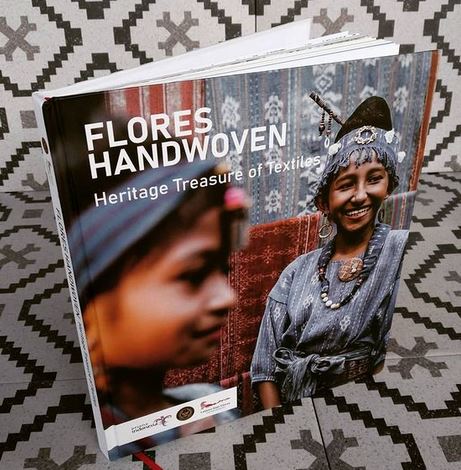
Flores Handwoven: Heritage Treasure of Textiles which is a collaborative book project with several young Flores’ writers.
One of your latest projects that I saw from your Instagram is a book project, “Flores Hand-Woven Heritage Treasure of Textiles”, can you share a little bit more about the book?
Actually I have a big dream to produce so many books about Flores and also about East Nusa Tenggara for every subject. But when I do this Innocentia Handoven project and I sell the idea to the government, especially from the Ministry of Tourism and Economic Creative of Indonesia, they say that this is nice, so I start to make it. Actually it is not that hard because I already collect the photographs and I also already have the story. I only need the chance to do it.
You have been collecting (photographs) almost throughout your life, I guess.
You also involved local young writers as well. If you can share a little bit more about that experience?
First, the sponsor asked me to do it by myself, but I think I needed to do something, not only for myself, but also my environment. As I spend most of my time around Flores, I connected with the young people of Flores. I know that so many young people here in Flores know how to write well and they are writers too, so I asked a few of them to join me in this project. I think it is important that the issue or the subject of hand-woven are not only known and understood by a few of us but also it is better to take more and more young generations to have the awareness of this hand-woven. So I asked them to join because if they join as part of this team, they also need to do some research.
So they are not necessarily weavers?
Yes, they are not the weavers. But we pushed them to know that.
I am not sure about your point of view, but I think it is very refreshing to have a lot of writers coming out of different areas that are outside of Java Island. Our Indonesian story used to be very Java-centric and a lot of them are based in Java. I think it is very important and refreshing to have voices from these different areas as well.
Also I think that the original story or things are better said by local people who came from there so the wrong perceptions and stereotyping is not happening again and again, and more and more. So, wherever we go, as a traveler too, if we want to know something, it is better from people that we met in that area, not from somewhere else. When I want to do a full project again, I want to do it with local people to write.
What was the age range of these writers that you got them involved (ed.: recruited)?
They come from various interests. Some of them, one or two, they did the thesis and also research specifically about the hand-woven, but it is only for academic needs. When the thesis ends up, it is saved in the library and not shared to the public. So this is also one thing that I want to talk about because every year we have a new young generation who also did the research about hand-woven, but all gone like nothing. They just work and they do not share those topics to the public. So some of them have already done the research and some of them are literature writers. So I just managed and then did some arranging and guidelines for them.
Actually, for this book, I let them pick the point of view that they want to show. So each of them have different themes and also points of view. 95% of the photographs are mine. I have collected it for years and then I also asked my friends to join it, for example one about Manggarai woven.
Few writers have specific themes that they want to talk about, like this Lamaholot, in the east of Flores. It talks about how the activities of weaving could become a moment for the women to share their struggles to each other and then they try to figure out and solve their problems, like life problems or household problems. In Flores area, hand-woven processes or activities are not done individually, but it is mainly collective activity. So most of them spend time together in one place, they start to talk to each other and one shares a personal story then they try to fix the problem.
Also another one who wrote about the hand-woven in Sikka, Maumere. He picked the theme about the compositions because we have a specific composition in our regency. We have specific rules of composition of the ikat.
When one book is released and produced, my next dream is to do it because when I finish reading this book, I think I want to do something more specific. This book is really general. There is only something at glance about this regency.
That book has already been released or will be released?
It has already been released but since it is sponsored by the government and by the ministries so only they have it and it is not for sale to the public. So they just use it for the souvenir and whatever they want to do with it. It is great to make a book that could be read by anyone who wants to know. It is sad if we produce a book and end up only a group of people who could read it. It is better to be enjoyed by anyone else.
We will be looking forward to it if it is ever released to the public.
I want to (do it) too, hopefully. I want to publish a book especially about Sikka weave because we have five or six different sub-ethnics and each of them has some particular patterns and some particular colours of weaving. So I want to make it like an encyclopedia. I also want to make some content about daily practice, stories about how people use it, the way they use it, etc. It is something missing from the book. Normally people do not try to do that so I want to.
I think it is a privilege. I am glad and also feel grateful that it is still easy for me to find and meet the weavers, my mom and also many weavers who are still active here around this regency so it is not that hard to do this. I only need to motivate myself to do it. The story is around me so it’s better to do it right now than later, when the masters die or pass away and we feel sorry because we have let the story go. So, I want to do it now.
One of the very interesting observations was that you involve young writers. In general, how do the younger people view Flores culture in general, maybe not just restricted to hand-woven but how is their reception with all these different influences of social media or new ideas. What do they think about Flores culture itself?
For the young generation, not only hand-woven in particular, by my own observations, I think that it is important that they need to leave Flores first, to stay and live in another place and then they experience how people treat them as people from Flores. People who are outside their place will start to think about who I am and they start to know how I present my culture. It has also happened to me and I think that this is also what I do now, it is maybe the accumulation of things that I have experienced outside. I spent many years outside and then I see this and that, people do in their country. So when I came back, I already had something that was already in my mind so when I practiced it, I think I just picked one by one there. I think that is what I can do here in Flores.
So I think we need to go outside of Flores. Even in Flores, there are really various and very complex cultures in Flores. When we visit the next regency, I have to talk with them in Indonesian because they do not know our own mother language. To visit each other as a neighbor is also important to gain our awareness and also to be united and call ourselves as a Flores people. We are a group.
It is also important because if we only know and also concentrate and love our own regency, something we normally do here in Flores, people are only proud of themselves as a local in this time and place, it is also hard to love the bigger community. So by visiting each other, then we know what is interesting in other places, what they have in other places so we do not see only one dot but we see many other things. I think young people need to go out and see other things and then back again and they could reflect on themselves.
Are there a lot of instances where people went out and then never came back?
I felt the same for a few years. Since I was in primary school, I do not want to live here and I want to live in Europe, but maybe due the way of life, the adaptations and circumstances that we feel and we face in foreign lands and then, we suddenly have the moment and ask ourselves who I am, where I come from.
I think young people need to go out and see other things and then back again and they could reflect on themselves.
Very interesting journey there. We tend to appreciate home when we are away, but when we are at home we tend to look outside.
It is still very slow and it is still a fight to catch the attention of the young generation here in Flores to know about the culture. I think they already know about some subjects of the culture, like music and art. They are in touch with these subjects really fast, but for hand-woven, it is still a struggle. Now, almost every week I start to do discussions on radio and I try to find who wants to be the speaker because it is funny if we are the only people who talk about these things. I am not the master of everything. I mean, probably I could speak or talk about Sikka particularly, but I cannot talk about hand-woven textiles from different regency. They need somebody who could be the spokesperson, not me. So this is our community or our collective job, not only one or two persons.
Also, they do not see this as a job that could benefit them. In our region or province, to be a writer is not that interesting for young people. Locals do not want to be a writer. I also think that it is hard to be a travel writer. Everywhere I go, I try to motivate and also people are still keen on specific jobs or to work in the office. But to do this job, it is still not in their mind. But I like Flores because there are still a lot of things to do.
What are your upcoming projects or what can we expect from Valen and Innocentia in the near future?
For Innocentia, there are new items, probably only one or two. We cannot release so many variants because it could be an exhausting project, there are so many things to do. Only specific things that I think could be done and not too stressful to make it. Maybe only one or two new items with a new pattern or new base fabric color.
For a book project, probably as I told you, that I want to have a specific book project. I am still preparing them and especially for the book, I need to prepare it first. Probably someone out there who is also interested to be a part of this project, I am really open.
What sort of collaborators are you looking for?
I think probably publications (ed.: publishers). I think Indonesia has Gramedia or Kompas, but I think to reach out to more readers outside of Indonesia, it is better.
Hopefully there are some people who are listening right now who might be interested to pick it up.
Do you have any final words to sum up our session today or your hopes for Innocentia and traditional hand-woven textiles in general?
I think to know our roots, to know about heritage or to live with our roots and our culture, is special. It is a privilege. To live this heritage, no amount of money could buy it. We can travel around the world. But if we traveled by knowing who I am, who we are and then we could present ourselves. We can know the world better as we know who we are and it is great.
We hope you enjoyed this episode of aNERDspective. Check out the previous episode on IGTV and our gallery and store if you would like a piece of Indonesia for your home or wardrobe. You may also check out Valentino & Innocentia Handwoven‘s Instagram for the latest collection.
Photo credit: Valentino Luis & Innocentia Handwoven, unless stated otherwise.
CONTACT US | TERMS OF USE | PRIVACY POLICY
© 2024. NERD VENTURES. ALL RIGHTS RESERVED.

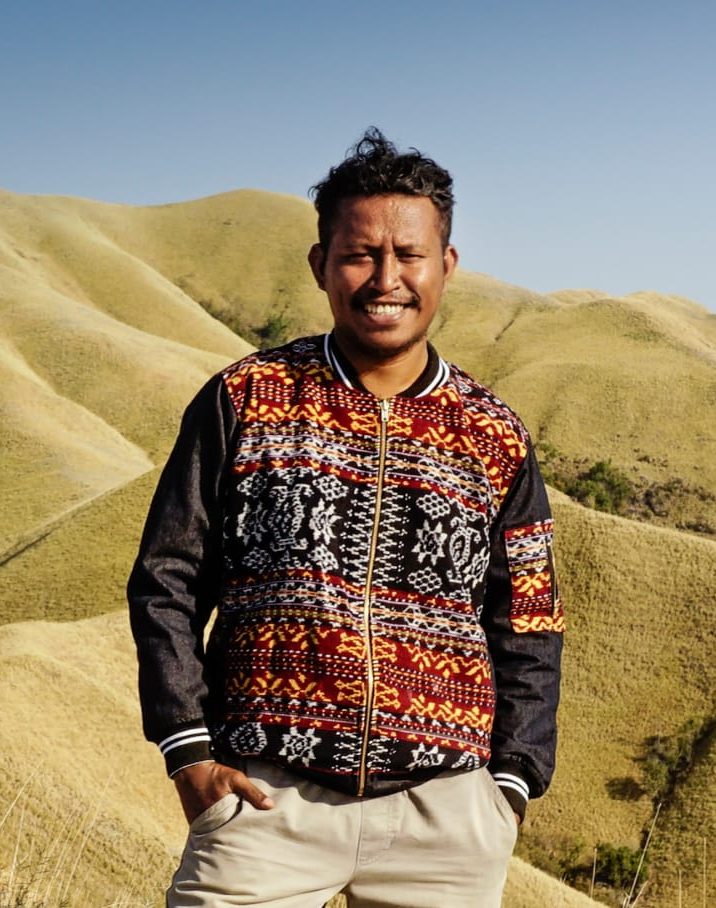
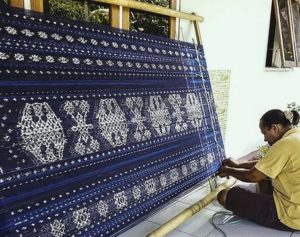
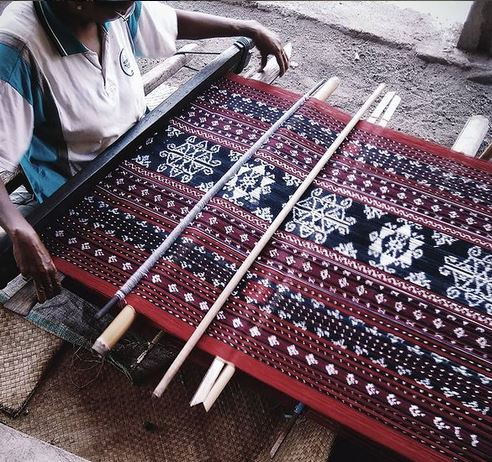
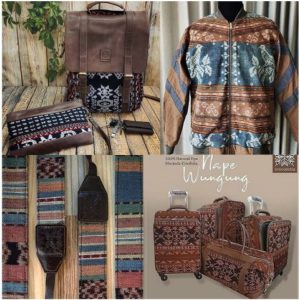
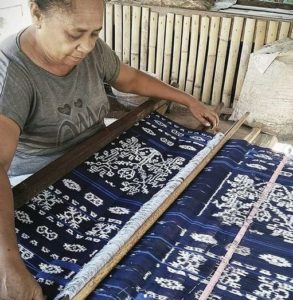
0 Comments